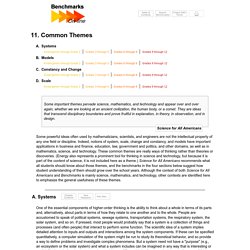

File. TECHNOLOGY AS A THREAT TO PRIVACY: Ethical Challenges. TECHNOLOGY AS A THREAT TO PRIVACY: Ethical Challenges to the Information Profession Department of Information ScienceUniversity of Pretoria0002 Pretoria, South Africa E-mail: britz@libarts.up.ac.za We are currently living in the so-called information age which can be described as an era were economic activities are mainly information based (an age of informationalization).
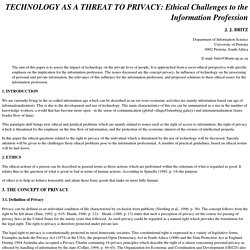
This is due to the development and use of technology. The main characteristics of this era can be summarized as a rise in the number of knowledge workers, a world that has become more open - in the sense of communication (global village/Gutenberg galaxy) and internationalization (trans-border flow of data). Mollet.pdf. Please ensure you have JavaScript enabled in your browser.
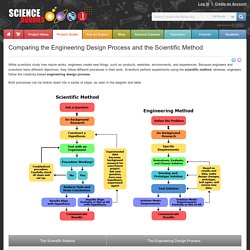
If you leave JavaScript disabled, you will only access a portion of the content we are providing. <a href="/science-fair-projects/javascript_help.php">Here's how. </a> While scientists study how nature works, engineers create new things, such as products, websites, environments, and experiences. Because engineers and scientists have different objectives, they follow different processes in their work.
Both processes can be broken down into a series of steps, as seen in the diagram and table. Keep in mind that although the steps are listed in sequential order, you will likely return to previous steps multiple times throughout a project. You can see the steps of each process in these flowcharts: Why are there two processes? Both scientists and engineers contribute to the world of human knowledge, but in different ways. Which process should I follow for my project? Flowcharts About Mathematics. Flowcharts About Mathematics. Unknown. Lecture 3 Scientific Inquiry. How advances in science lead to advances in technology ? As man’s understanding of the laws of nature increased, he thought of ways of using this understanding to create new things for his use.
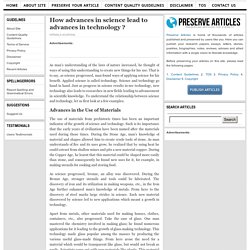
That is to say, as science progressed, man found ways of applying science for his benefit. Applied science is called technology. Science and technology go hand in hand. Just as progress in science results in nre technology, new technology also leads to researches in new fields leading to advancement in scientific knowledge. To understand the relationship between science and technology, let us first look at a few examples. National Science Education Standards. Each category, the form of the standards, the criteria used to select the standards, and some advice for using the science content standards.
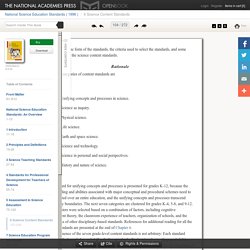
Rationale The eight categories of content standards are Unifying concepts and processes in science. Science as inquiry. Physical science. The standard for unifying concepts and processes is presented for grades K-12, because the understanding and abilities associated with major conceptual and procedural schemes need to be developed over an entire education, and the unifying concepts and processes transcend disciplinary boundaries.
The sequence of the seven grade-level content standards is not arbitrary: Each standard subsumes the knowledge and skills of other standards. Multidisciplinary perspectives also increase from the subject-matter standards to the standard on the history and nature of science, providing many opportunities for integrated approaches to science teaching. UNIFYING PRINCIPLES of Life Science. Page xiii (continued) Life science is the study of living things.
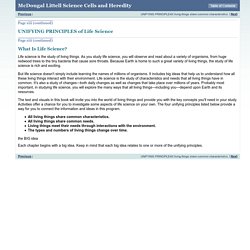
As you study life science, you will observe and read about a variety of organisms, from huge redwood trees to the tiny bacteria that cause sore throats. Because Earth is home to such a great variety of living things, the study of life science is rich and exciting. But life science doesn't simply include learning the names of millions of organisms. It includes big ideas that help us to understand how all these living things interact with their environment. The text and visuals in this book will invite you into the world of living things and provide you with the key concepts you'll need in your study. All living things share common characteristics. The Scientific Universe. Branches of science.
The scale of the universe mapped to the branches of science and the hierarchy of science The branches of science (also referred to as "sciences", "scientific fields", or "scientific disciplines") are commonly divided into three major groups: natural sciences, which study natural phenomena (including fundamental forces and biological life), formal sciences (such as mathematics and logic, which use an a priori, as opposed to factual, methodology) and social sciences, which study human behavior and societies.[1] The natural sciences and social sciences are empirical sciences, meaning that the knowledge must be based on observable phenomena and must be capable of being verified by other researchers working under the same conditions.

Ten-Unifying-Themes-in-Biology.pdf. Chapter 11 ~ Benchmarks Online ~ Project 2061 ~ AAAS. Some important themes pervade science, mathematics, and technology and appear over and over again, whether we are looking at an ancient civilization, the human body, or a comet.
